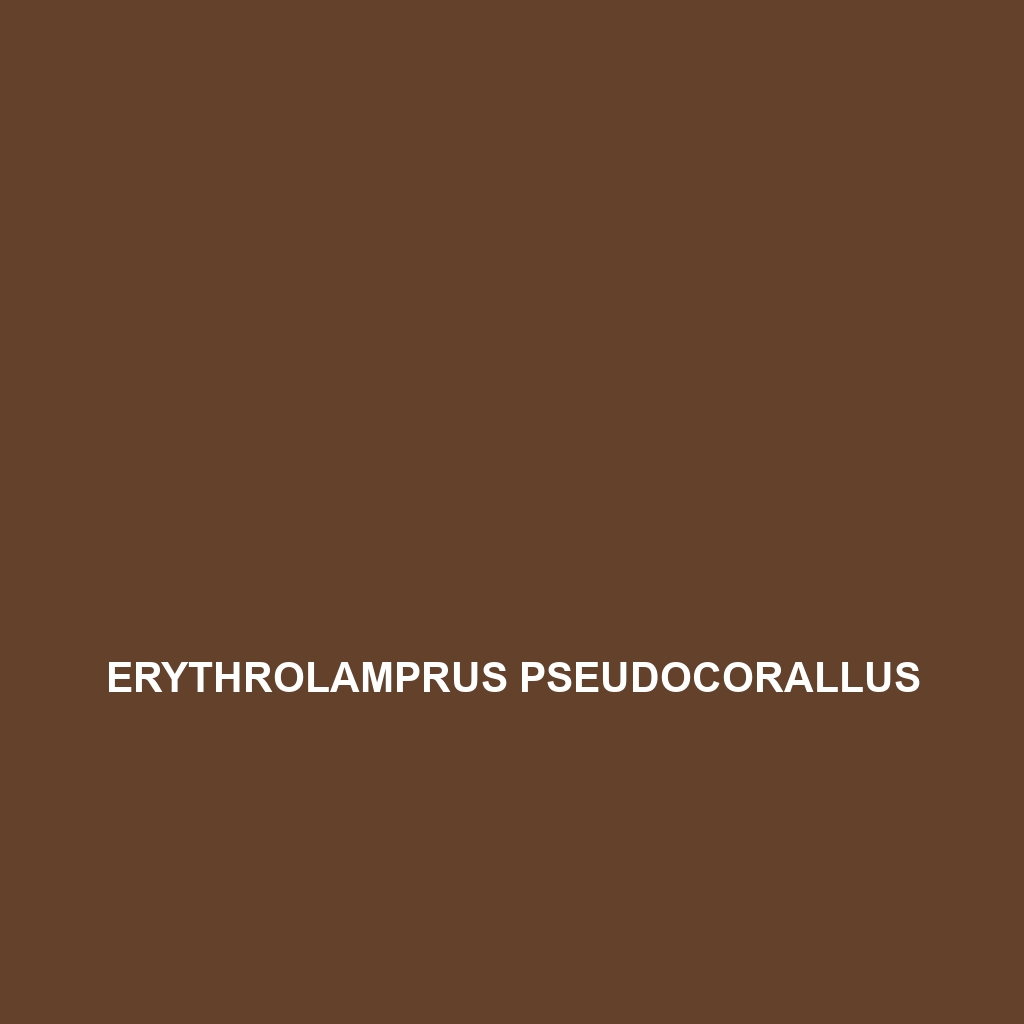Common Name
Erythrolamprus pseudocorallus
Scientific Name
Erythrolamprus pseudocorallus
Habitat
Erythrolamprus pseudocorallus, commonly known as the false coral snake, primarily inhabits a range of tropical and subtropical environments. This species is mostly found in regions of Central and South America, particularly in countries such as Venezuela, Colombia, and Brazil. The false coral snake prefers rainforest environments, where the dense vegetation offers ample cover and hunting opportunities. Additionally, it can also be seen in secondary forests, scrublands, and sometimes in savannas. The climate in these areas is typically warm and humid, which creates an ideal habitat for this species. Marine habitats are not preferred, as Erythrolamprus pseudocorallus is a terrestrial snake, but it can be occasionally found near freshwater sources, contributing to its need for a moist environment.
Physical Characteristics
Erythrolamprus pseudocorallus showcases a distinctive appearance, characterized by its vibrant coloration. The snake can reach lengths of up to 90 cm (35 inches), although some specimens may grow larger. Its body is slender, further enhancing its agility in dense undergrowth. The most notable feature is its scales, which exhibit a striking pattern of red, black, and white (or cream) rings. These bold colors serve as a warning to potential predators, mimicking the appearance of venomous coral snakes. The head is short and slightly narrower than the body, and the eyes are small, positioned to provide a broad range of vision. This species’ unique coloration and size make it easily distinguishable from other non-venomous and venomous snake species found in the same habitats.
Behavior
The behavior of Erythrolamprus pseudocorallus is both fascinating and adaptive. This species is primarily nocturnal, meaning it is most active during the night. During daylight hours, false coral snakes often seek refuge in leaf litter, burrows, or under rocks, providing them protection from potential predators. They exhibit solitary behavior, coming together only during mating season. Mating rituals involve intricate courtship displays, where males may engage in combat with competitors for female attention. After mating, females often exhibit elaborate nesting behaviors, finding suitable sites to lay fertilized eggs. These behaviors illustrate the adaptability of Erythrolamprus pseudocorallus and its strategies for survival in a competitive environment.
Diet
Erythrolamprus pseudocorallus is primarily a carnivore, feeding mainly on smaller prey such as lizards, frogs, and small rodents. Its hunting strategy relies on stealth and ambush techniques, utilizing the element of surprise to capture prey quickly. The snake has a flexible jaw structure that allows it to consume prey much larger than its head. In addition to its predatory habits, the false coral snake plays a vital role in controlling populations of its prey species, thereby contributing to the ecological balance in its habitat. The dietary habits of Erythrolamprus pseudocorallus not only sustain the species itself but also influence the dynamics of the ecosystems in which it resides.
Reproduction
The reproductive cycle of Erythrolamprus pseudocorallus is marked by its unique mating season that typically occurs in the warmer months, coinciding with optimal environmental conditions. Mating can take place shortly after the rainy season, when food is abundant, ensuring that both parents are well-nourished. The gestation period lasts approximately 60 to 70 days, after which females lay a clutch of up to 12 eggs. These eggs are often hidden within leaf litter or buried in moist soil to provide adequate humidity and protection from predators. The hatchlings emerge after about 60 days and are highly independent from birth, relying on their natural instincts to hunt for food. The parental care is minimal, reflecting a strategy common among many snake species that ensures the survival of their offspring in the wild.
Conservation Status
According to the IUCN Red List, Erythrolamprus pseudocorallus is currently classified as Least Concern, indicating that the species does not face immediate threats of extinction. However, ongoing habitat destruction due to deforestation poses potential risks to its populations. Conservation efforts aimed at preserving tropical and subtropical ecosystems are essential for maintaining the delicate balance needed for the survival of this species. Increasing awareness about the ecological significance of Erythrolamprus pseudocorallus and its role in biodiversity is vital to ensure continued protection against habitat loss and degradation.
Interesting Facts
One fascinating aspect of Erythrolamprus pseudocorallus is its remarkable mimicry abilities. The bright coloration not only serves as a warning against predators but also enables the species to mimic other more dangerous snakes, which may deter potential threats. Additionally, cultural associations have developed in local communities in Central and South America, where people often admire the false coral snake for its beauty and vibrant colors. Its elusive nature and striking patterns make Erythrolamprus pseudocorallus a subject of interest for herpetologists and wildlife enthusiasts alike.
Role in Ecosystem
Erythrolamprus pseudocorallus plays a critical role in its ecosystem as both predator and prey. It helps regulate populations of smaller vertebrates, contributing balance to the food web within its habitat. Additionally, the snake serves as a food source for larger predators, demonstrating its importance in maintaining ecological connections. As a non-venomous species, the false coral snake exemplifies the intricate relationships among various species in rainforest ecosystems, supporting biodiversity and contributing to the overall health of its environment. Understanding the role of Erythrolamprus pseudocorallus in its habitat highlights the need for conservation and protection of its natural environments.
